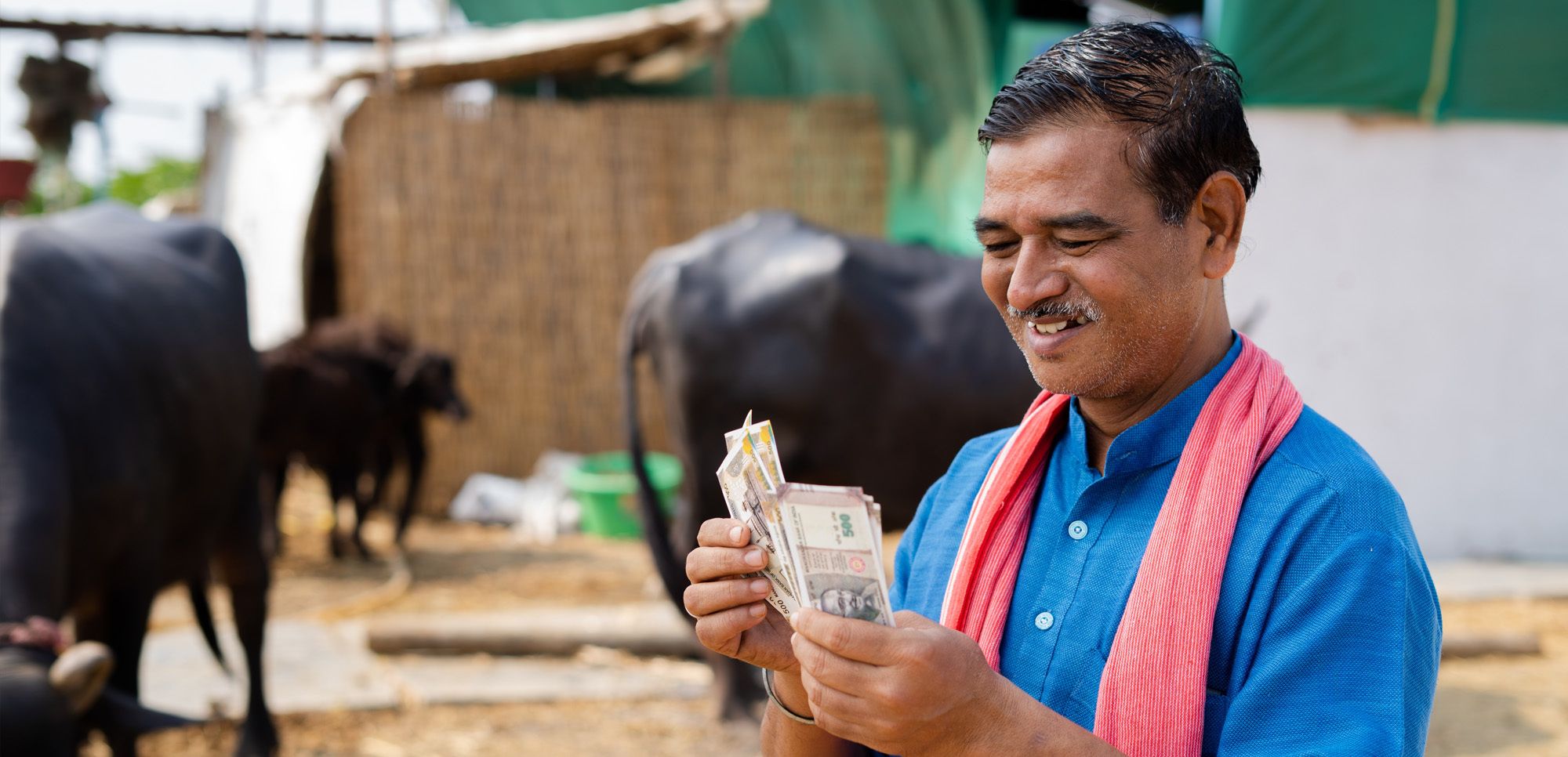Challenges and opportunities for Lenders Financing for Cattle Loan

Agri-fintech is a $600Bn opportunity in India.
Hemendra Mathur, Venture Partner at Bharat Innovation Fund [1]
In the entire agriculture sector, which includes the livestock sector, informal lending constitutes 70% of all lending. The interest charged on this informal credit ranges between an astounding 24%-60% per annum. This takes the overall Weighted Average Cost of Capital to a whopping 20%! [1]
Such a high-interest burden makes it almost impossible to break even for small and marginal farmers, let alone make profits. Of all the activities under agriculture, livestock farming has one of the highest returns in terms of investment.
India is already the largest milk producer in the world, with an estimated output worth INR 6,54,000 Crs in 2018-19, which is more than the combined output of wheat and paddy in India. Milk production continues to grow at a staggering rate of 6.% CAGR. [2]
Other produce from livestock is also growing at breakneck speed. Egg production, for example, has been growing at 9.4% year on year. Fish production is second only to China, growing at about 7%. Marine products are India’s single largest agricultural export commodity. [2]
Formalizing the informal credit system in India’s livestock sector is one of the most promising opportunities in the Agri-fintech space today.
The challenges in a cattle loan journey are well known. With technology, however, many of these challenges can now be tackled and eased out.
Before looking at the challenges, let us first see what the systemic support for cattle loans is.
Govt. support for cattle loans
In 2016, RBI launched Priority Sector lending, in which 18% of loans with subsidized interest rates must go to agriculture and allied services. [3]
Under the PSL scheme, domestic banks must ensure that the overall lending percentage to farmers from non-corporate backgrounds is always above the system-wide average of the last three years. Loans under Kisan Credit Card schemes also fall under this category.
Priority Sector loan options include loans to individual farmers and proprietary firms in agriculture-allied activities like fishery, dairy, animal husbandry, sericulture, bee-keeping, and poultry. Loans to construct storage facilities and cold storage units/chains are also part of the PSL program.
But there are many challenges to cattle loans that make them unattractive for many lenders.
Challenges in Cattle loans
One of the key issues with the loans under PSL scheme is that it puts stress on the banks to meet yearly targets. In turn, they end up giving low-quality loans. In the long run, these low-quality loans become NPAs and eat into banks' profitability.
Most of the cattle loans are low value and high volume in nature. This inherently increases the transactional costs and overhead expenses for the lender.
Besides this, the subsidized nature of cattle loans forces banks to cut corners on other aspects of the business, reducing the overall strength of the financial system.
Then there is the issue of data. There is limited access to livestock data. There are also huge inaccuracies in the available data. The low-wage cattle owners rarely have a credit score to assess their creditworthiness.
Inefficiencies in underwriting are rampant in cattle loan journeys. Fraudulent paperwork to get loans approved is common in the livestock sector. Add to this the unpredictability due to weather and diseases in cattle - it is not a stretch to understand why lenders consider cattle loans a loss-making endeavor.
Agri-lending challenges. Source: Cropin
Technology aid to low-risk livestock lending
There is a lot that technology can do to streamline cattle loan journeys.
With data sensors like remote sensing, drones, sensors, and IoT devices - near-real-time data can be captured, and data-backed lending decisions can be taken to mitigate the risks in cattle loans.
Technology platforms can be used for farmer onboarding and remote monitoring on mobile apps. Input-linked credit and credit scoring can be improved with schemes like Kisan Credit Cards.
Livestock identity verifications, with customized loan journeys for KCC verification and renewals, can help in having seamless and faster loan processing. With consistent and accurate data collection, finer AI-based lending models can be created for working capital loans for the purchase of feed and equipment in livestock farming.
Profitability on asset loans on cattle can also be improved with better predictive modeling.
Lentra - a digital solution to Cattle loans
Lentra has created AI-based technology platforms that can help Banks, NBFCs, and other lending institutions in accurate risk assessment in Cattle loans and minimize write-offs.
Our intelligent API-based microservices network enables instant loan decisions and accelerated digital lending options for livestock lending and seamlessly services the rural sector in their cattle loan journeys.
Lentra’s Cattle Loans & KCC digital platform is mobile-friendly for ease of use by all stakeholders. Our systems ensure fast and accurate data collection and have manual verification capabilities for sales teams and payment collection teams.
You can watch a detailed demonstration of how a KCC loan journey can be digitized end-to-end with Lentra. Please reach out to us for a free demo on how you can use Lentra for Cattle Loans & KCC use cases.
Source: NDDB
